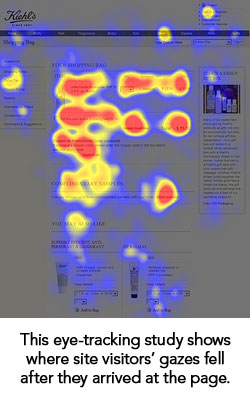Does your mobile phone provide better quality than a typical webcam? I'll test some virtual webcam software for mobile.
What’s next after email and IM?
We have many tools, IM, Chat, Email, SMS but are we addressing the real issues to better communicate?
It seems the tech world has gone Slack-happy and indeed Slack seems to have scratched an itch we’ve been trying to get at. Slack’s PR dept is busy telling the world they are the next big thing after email. Indeed email volumes have now dropped 10% from their high in 2010. Not surprising in the 25-35 year old segment, email usage dropped 18%. But the worry figure is in the teen age group (the people who will run the world soon), where email usage has fallen 60%. It would seem email may have sailed it’s last voyage.
While Slack may have scratched an itch, I’m not sure it’s treating the rash I have in solving my communication needs. The elephant in the room is how are we going communicate in the future. The field is still wet, the game may not even have begun.
[ecko_wide]We do know the ingredients in our communications stew and the winner will be whomever crafts the perfect recipe using these household staples.[/ecko_wide]
Support short form communication
We know that traditional email has become ineffective. 55% of us say we don’t look or respond to email regularly. We also know emails longer than five sentences are opened and responded to slower. Instant messaging is really nothing more than really fast mail, so I lump them all into the same bucket.
Jeff Bezos and Steve Jobs were famous for (1) answering their own email and (2) the brevity of their responses. Short can be effective. Orville Wright announced the first winged flight to the world in a telegram of only 35 words.
Support long form communication
But the art of writing is not lost. Amazon, for example, is well known for long form documents for outlining new product initiatives. These briefs allow to read from beginning to end the problem, the opportunity, and the proposed solution. These brief documents negate the need for meetings and death by PowerPoint. It allows Amazon to reach a go/no-go decision much faster. With this in mind, WordPress is hard at work on their new P2 theme as a way to transform a blog into more of a long form conversation document.
Manage non-proportional communication exchange
You ask a simple question. The response though could be far from simple or short. How to segway from a short form communications to long for?. Slack is trying this with their Post capabilities allowing you to send a short conversation to a longer form medium (though I suspect this feature isn’t being use much for the moment).
Must work on mobile, desktop, anywhere
Slack has also done a great job with a web, desktop and mobile experience eclipsing others elbowing for the mantle. Many have failed with their mobile experiences (Skype for example). But on the reverse, name a mobile-first solution that moved to the desktop. While mobile may be first, we don’t live in a mobile-only world yet. You have to be excellent on everything. This is isn’t easy.
Multimodal
Can we combine everything into a single workable tool? Microsoft Outlook was the first attempt, Gmail built upon this. Various start-ups, such as mailtime.com, have also tried to climb the hill. Real time voice/video communications has been a WebRTC bolt-on lacking any contextual awareness. For example, I’m reading a message from you and launch a voice session. How do I convey that I’m calling about that message?
I rather have fewer tools in my toolbox than more, right now I have too many.
Support temporal communications
My communications with you may be singular or limited. How can you reach me without a lot of fuss? Today’s telephone network and Internet email allow anyone to reach me without having to opt in. We continue to need to have unique addresses for ourselves.
Skype asked you to ACCEPT each connection and then you had to delete them afterwards. Try figuring out how to add a non-domain person to your Slack channel. It’s too much work and as you all know, I’m opposed to work.
Support persistent communications
I have to specify who I want to add to my “friends” list. This requires me to do the AI piece. You’re also either a friend or not, binary. But more likely our relationships operate on a gray scale continuum. I want the application to fade in and fade out without me taking any action. I’m either working with you more or less, it’s never a steady state.
Manage machine-to-person communication
How much of your email traffic today is from a machine or worse, a person pretending to be a machine? We all are getting “good” spam. Newsletters, receipts, important, perhaps timely. But this good spam overwhelms my Inbox. I use Other In Box on Gmail and it works well, mostly. But it’s a feature not a stand alone business. If email dies, how do I get, organize and manage these M2P messages? Marketers are already struggling with how to communicate, email is their last medium that’s working partially.
Managing timeliness, urgency, tasks and informational.
Extremely hard! How to bubble up stuff that’s important and downgrade more generic items. The road is littered with attempts and failures. But that doesn’t mean it’s not a problem that needs solving. SMS on our phones used to signify an urgent timely communication from a live person. But now it’s more likely a vendor informing my order is “on the way”. Each new SMS adds to the cry wolf problem, soon I will just ignore SMS. SMS is losing it’s urgency along with email.
Need for less, not more will be ultimate winner
 Slack gets kudos for offering channels, as a way to segment communications into persistent threads. But it easy to over do these channels and end up with low flow capillaries. One start-up I know has 100 employees but 250 Slack channels. How effective is that?
Slack gets kudos for offering channels, as a way to segment communications into persistent threads. But it easy to over do these channels and end up with low flow capillaries. One start-up I know has 100 employees but 250 Slack channels. How effective is that?
As I’ve written before on Tivo, we were initially interested in many TV channels until we discovered our channel, the Tivo Channel. Netflix has taken this to a new level with a “my channel now” capability. The fuzzy logic to present me a single channel of information I consider relevant is super hard.
We don’t like to manage our information
How many of us gave up sorting our emails into nice little folders? How many corporations implemented a Sharepoint type collaboration solution only to find out 24 hours after launch that the information was already hopelessly out of date. Why? Because it was just too much work. Tiddy folders versus organized chaos. I’ll vote that chaos continues. These solutions required humans to the hard work and we know the choice we all make.
Eliminate data trivia
I met a board member who happened to be a founding partner of McKinsey & Company, the global management consultancy. I asked him what I thought was a trick question, “What is the most common mistake that executives make?”
He didn’t hesitate, “Managers fail to act upon the information they already have.”
Indeed with all our systems, employees seem to always be in “get more information” mode. This can’t be productive. Workers need only what they need to know do their job. I applaud companies who don’t sequester their data. But my whole day can get consumed with the latest updates from facilities on the new maintenance service we hired. Much of the data we deal with daily simply isn’t relevant to our lives. Our new systems must learn to skim off the valuable bits.
Users don’t wish to maintain anything
With consumers, you learn that given a choice they will do nothing as their default action. I find myself beholden to applications who increasingly demand my attention to do something. I really want to do nothing. I spend more hours managing photos I’ve taken on my travels than looking at them. That’s the wrong ratio. Tools that give me back time, are the most valuable.
Search/retrievable is important
Cisco acknowledged this with their recent acquisition of Synata. I don’t care where the information is, how it’s stored, or who has it. I just want it on my terms. Search is hard and plays into the hands of Google (who hasn’t weighed in on any of this yet). For those who are highly in their daily lives (those who Sharepoint) this seems wrong. But our daily life is a controlled chaos and we manage complex relationships by second nature.
Solve the F-Pattern problem in how we consume information
 Every web developer knows the F-Pattern design rules. You are consuming this article now in zig-zag pattern from top to bottom. It’s how humans work.
Every web developer knows the F-Pattern design rules. You are consuming this article now in zig-zag pattern from top to bottom. It’s how humans work.
Instant messaging clients have the most recent information at the bottom. It’s an espresso shot, rapid fire type of communication. We only care about the last bit. But to follow any instant messaging thread, you have to read from bottom to top. Unfortunately, humans don’t like to scan data this way. It’s tiring and tough to process. Trying to enter a discussion mid-stream is quite difficult to pick up.
What do you think? How far off the mark am I? Does a single solution need to solve all of this? For years, we calmly existed with nothing more the Microsoft Office Suite + Outlook to occupy our day.


